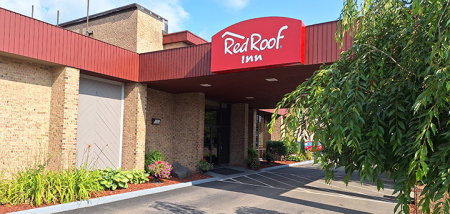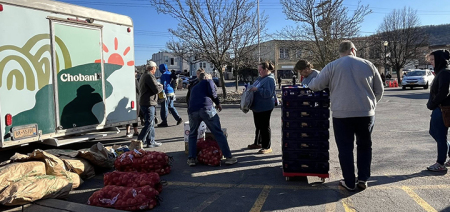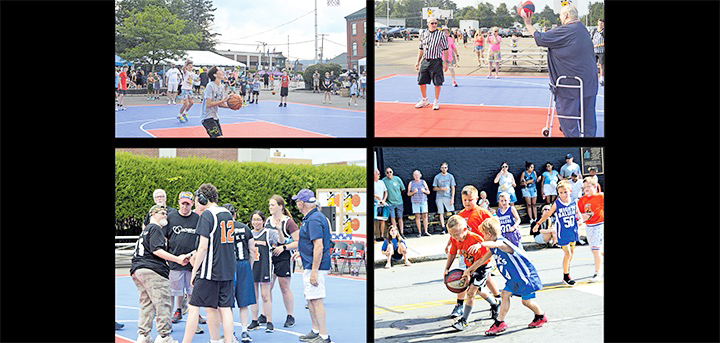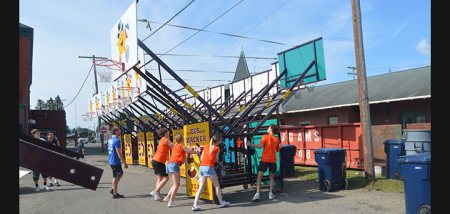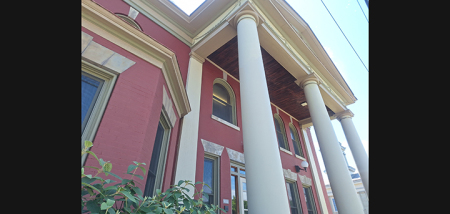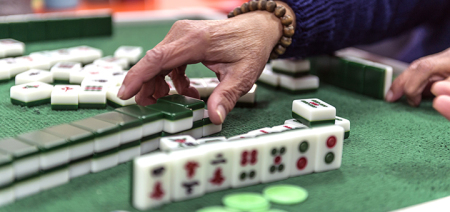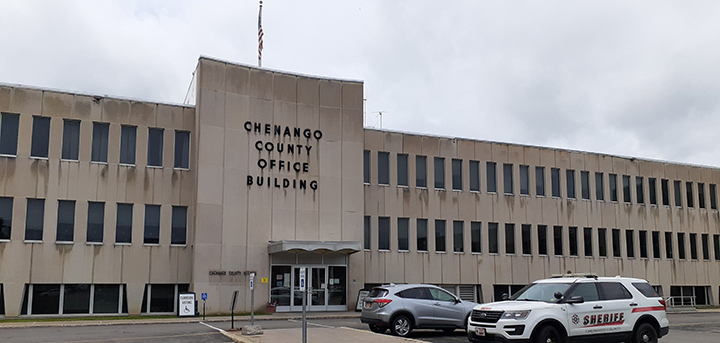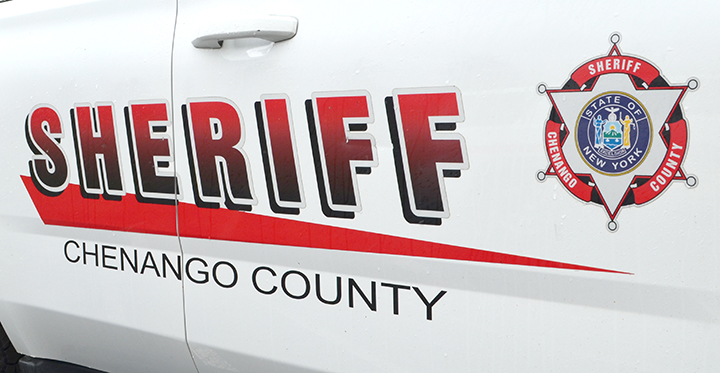A Day To Remember
Published:
May 31st, 2010
By:
Melissa Stagnaro

It was truly an honor to visit the New York State Veterans’ Home in Oxford last week. With all of the picnics and barbecues, it is sometimes easy to forget the true meaning of the Memorial Day holiday. I hope that the stories of the veterans I had the privilege of meeting that day will remind you how important it is to remember all of those who have served our country and especially those who have made the ultimate sacrifice so that we as a nation can live free. –MS
OXFORD – The New York State Veterans’ Home in Oxford is home to 242 residents, all of whom are veterans or the spouses or parents of a veteran. Each has a story to tell.
Following in the footsteps of Florence Nightingale
Some people know their calling early in life, and for Irene Carr that calling was to become a nurse.
“I never wanted to do anything but that ever since I was a little girl,” said Carr, who grew up in Broome County town of Maine, the daughter of a World War I Army veteran.
Carr had already trained as a nurse and was working in a Binghamton area hospital when war broke out again. This time, it was she, and not her father, who answered the call to duty. In doing so, she became one of nearly 60,000 women to serve in the U.S. Army’s Women’s Army Nurses Corps during that time.
“It was just something you felt you needed to do,” she explained. While her parents were supportive of her decision to serve her country, she said they were worried at the prospect of her being sent overseas. Carr, who was in her early twenties at the time, wanted nothing more than to do just that so she could tend to wounded soldiers near the front lines.
“Of course, I was young and foolish,” she laughs now.
Carr’s dreams of serving overseas were never realized, however. Instead she spent the duration of her military service at Rhoads General Hospital in Utica, only 100 miles from home. While she repeatedly applied for transfer abroad, she said she was “declared necessary” at Rhoads, where she helped care for wounded officers returning from combat in Europe.
According to excerpts of an article published Richard L. Williams on the Oneida County Historical Society’s website, more than 25,000 servicemen were treated at the 1,750 bed facility between 1943 and 1946. The 180-building complex was constructed expressly to provide medical treatment and rehabilitation to those injured in combat, and was closed after the war. The facility was named after famed Army surgeon Col. Thomas Leidy Rhoads.
“It was a good hospital,” said Carr, who recalls the facility as exceptionally well run. “Of course it was; it was an Army hospital,” she added with a laugh.
Carr said she felt she and the other members of staff at Rhoads provided excellent care to the soldiers who passed through the military hospital’s wards. The work was challenging and rewarding, she said. But more than 60 years later, she still gets emotional thinking about the damage wrought by war on the minds and bodies of the young American soldiers they treated.
“I didn’t enjoy seeing those poor boys,” she explained, many of whom returned from the war missing limbs and with other debilitating injuries.
Although proud of her service, Carr said it is a time of her life which she doesn’t think about often. She prefers not to talk about those years.
“You kind of put it away,” she explained.
Carr herself started her service as a Second Lieutenant, and was elevated to First Lieutenant before leaving the military at the end of the war. It wasn’t until after returning home and resuming her civilian nursing career that she met Clyde Carr, an Army Private who had spent time at Rhoads as a patient.
“He was in France, and saw real war,” she said of the man who would become her husband.
Carr was 25 when they married, and she soon gave up her nursing career. But, according to her, that is when life really got exciting, referring to the years she and her husband spent raising five daughters.
“They are all little live wires, just like their father,” she said.
Carr, who is now 89, had 63 years with her husband before he passed away last year.
“He left too soon,” she said, sadly.
A combat veteran who flew missions in WWII, Korea and Vietnam
Lt. Col. Thomas Gonyon, U.S. Air Force, retired, is the highest ranking officer currently in residence at the New York State Veterans’ Home in Oxford. Gonyon’s career spanned three decades, and three wars: World War II, Korea and Vietnam.
“I joined the Air Force in 1943, as soon as I turned 21,” reported Gonyon, who grew up in the Glendale section of Queens. He waited until his twenty-first birthday, he explained, because at the time it was the minimum age for commissioned officers, thus enabling him to graduate from the Aviation Cadet Program as a second lieutenant.
It was while he was in the cadet program that Gonyon married the love of his life, Doris. Eventually, their family would grow to include a daughter, Cheryl, who visits her father often.
After completing the initial phase of his training, Gonyon underwent further training in Salt Lake City to prepare him to fly B-17 bombers. During this transition school, crews of 10 were formed to include pilots, gunners, bombardiers and navigators.
After Gonyon and his crew had begun to train together, they were sent to Kearney Army Airfield in Nebraska, where they were entrusted with a brand new B-17 and tasked with flying it to Ireland.
After delivering the aircraft, they were stationed at a base in Grafton Underwood, a small English village approximately 90 miles North of London. Over the next 18 months, from January of 1944 to July of 1945, Gonyon and crew flew 32 missions.
“By that time, D-Day had happened,” he said. “We had a number of missions crammed on us because the need at that time was great.”
In August of that year, Gonyon returned to the United States and was “reclassified” to a non-crew member and sent to Instructor Pilot School for B-17s.
It was at this point that his Air Force career took a turn of direction
“I had the opportunity to get into a different type of flying,” Gonyon explained. He turned in his bomber for a PBY, an amphibious aircraft used in air sea rescue, and was stationed at Goose Bay in Canada until the Japanese officially surrendered, bringing the war to a close.
Gonyon chose to leave the military at that point, returning to New York to work as a machinist, but the hiatus lasted only a few months.
“I left that because they were bringing in more people than they could use,” he said. “I decided to go back into the Air Force.”
In doing so, however, he forfeited his commission and returned to the service as a non-commissioned officer. He was stationed in Japan, keeping touch with his young daughter by letter, at the start of the Korean War.
“I was recalled to active duty as a pilot,” Gonyon reported, this time flying C-46 cargo planes.
“We flew mostly in support of airborne troops,” he explained. “We’d drop troops and cargo for the ground crews.”
He finished his tour, which was by then defined as 500 hours, and returned to the United States where he decided once more that it was time for a change in his career path.
“You could see the handwriting on the wall,” he said, explaining that since it took a relatively short time to train new pilots, veterans like himself were becoming obsolete. Though he stayed current flying, he entered mechanics and electronics school to become a communications officer.
His next posting was in Germany.
“It was sort of a gift,” he said, because it allowed his family be together. They lived off base in Prum, the site of the radar unit to which Gonyon, then a Captain, was assigned as communications staff officer. They remained in Germany for three years, during which Cheryl graduated from high school.
After returning stateside, Gonyon spent the next year and a half in Connecticut as an electronics staff officer and advisor to an air national guard unit. From there, they got order to report to Hawaii.
The timing of this assignment coincided with the escalation of hostilities in Vietnam, and Gonyon was once again called to duty. He was sent back to school to learn to fly yet another type of aircraft, Lockheed’s C-130 Hercules.
“It was another 500 hour duty assignment,” he said. Based in Taiwan, he and his crew flew missions into Vietnam which lasted 20 days at a time, providing ground support for the “on-the-ground” forces.
But it was his next posting which proved harder on his family than even his tours of duty in three foreign wars. After enjoying the tropical climate in Hawaii, the Gonyon’s were assigned to Duluth, Minnesota on the frozen shores of Lake Superior.
“The winters wore on us,” admitted Gonyon, which, by the tone of his voice and his daughter’s when they refer to the city, may be an understatement. The two recalled hearing the horn of the ice breakers on Lake Superior well into May.
“I could have stayed in,” he reported, but in 1973, at the age of 53, he called an end to his 29-year military career. “It was a good time to get out.”
When asked what was most difficult for him during his nearly 30 years of service, Gonyon said it was the separation from his family which was the hardest.
“There was always concern that they were going to be taken care of properly,” he said.
But while she felt her father’s absence at times during those year, his daughter, Cheryl Gonyon Coughlin said there was never a dull moment as she and her mother followed him around the globe.
“I’m very proud of him,” she said.
Author: Melissa Stagnaro - More From This Author
Comments
